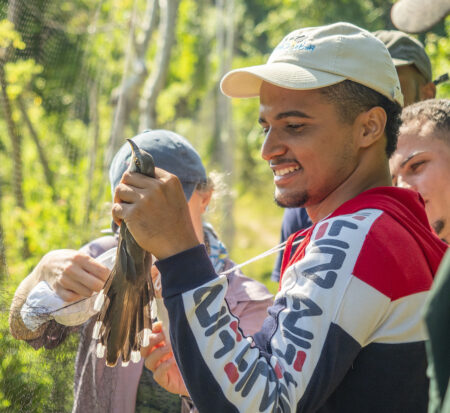
BirdsCaribbean’s Caribbean Bird Banding Network recently held their second bird banding training workshop in the beautiful Dominican Republic. Read on for a delightful personal account of this workshop from local high-school teacher and dedicated Dominican biologist Elvin Manuel Vargas Estévez.
On the fresh morning of March 8th, 2023, in Jarabacoa, Dominican Republic, one of the most rewarding experiences of my life as a biologist would begin. I was participating in a Bird Banding Workshop organized by BirdsCaribbean. It sounds beautiful just to say it, but the true beauty lies in how and what happened there to consider it so valuable.
I must admit—I have always been a wildlife lover since I was a child. But my four-year-old self could never have imagined that I would have a bird in my hands, measuring its anatomical proportions, carefully observing the arrangement of its feathers, and eagerly looking for molt limits. However, today I feel immense excitement knowing that it is now part of my life, allowing me to continue to educate myself and contribute knowledge to avian conservation and society.
Setting up mist nets and sowing euphoria
On the first day of the workshop, my colleague Gerónimo Abreu and I were so excited to start the activities. We talked about what we wanted to do that day from the moment we woke up until we left our room. Once everything was ready, we headed to the main hall and dining room of the Ranch, where lead banding trainer Holly Garrod explained to us with great enthusiasm what we were going to do that day. With clear instructions, we took the necessary equipment and set off to explore the area that would be our morning workplace for the next four days.
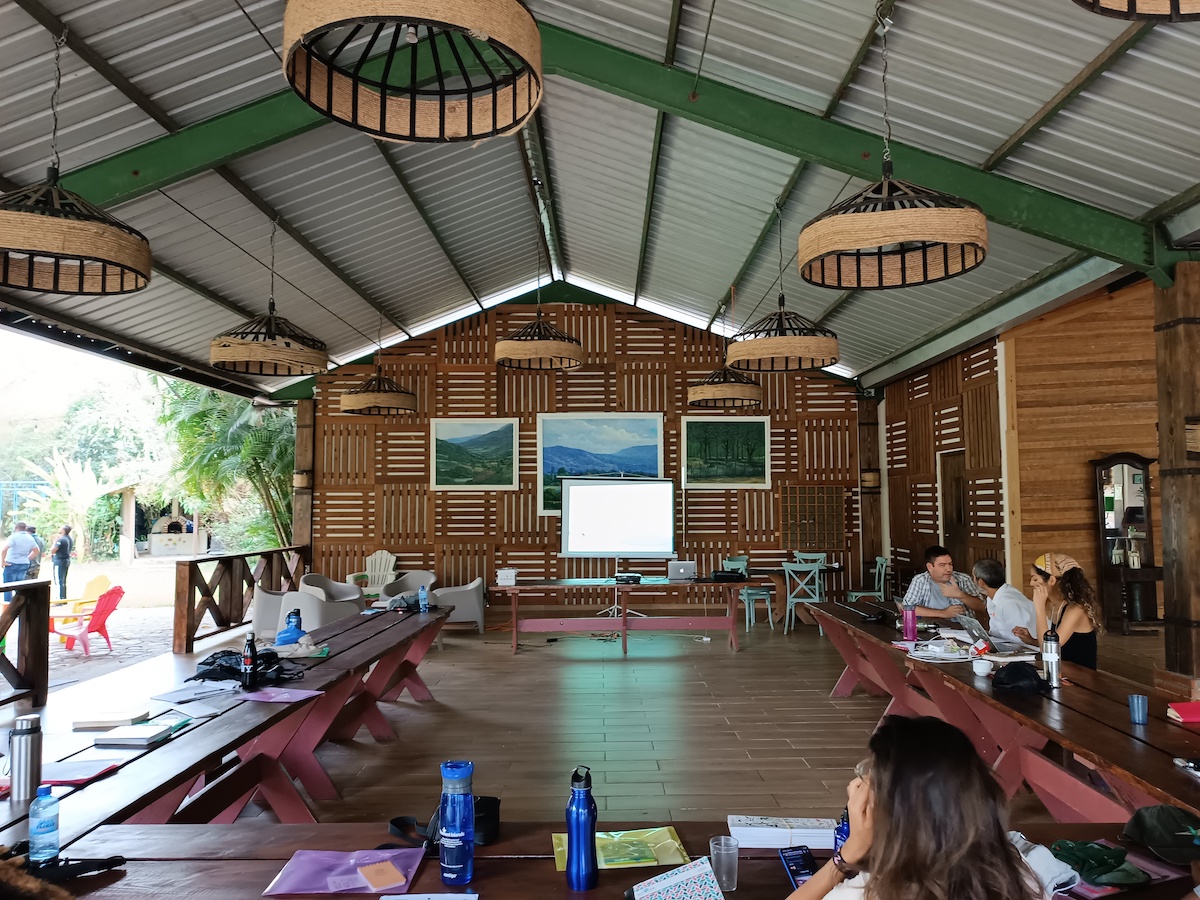
The process of setting up mist nets is an art that is not as boring as it may seem. Well, it’s true that it’s probably not the most exciting part of a bird bander’s day, but there is a certain magic in the process. The first time I saw a mist net was during a bird banding demonstration that Holly did at the Botanical Garden in Santiago. There I learned that setting up and taking down nets is like a climbing sport. We drive stakes firmly or look for a stable attachment, and “climb with the net” to maintain tension at all times. How interesting! Something as methodical and procedural as setting up a mist net can become fun if you look at it with different eyes.
I remember how the other participants were attentive to everything that moved, what the trainers said, and what more experienced banders did. Throughout that first day, I kept learning about the nets, observing how the more experienced bird banders worked, and learned how to enter banding data while eagerly waiting to hold and band a bird for the first time.
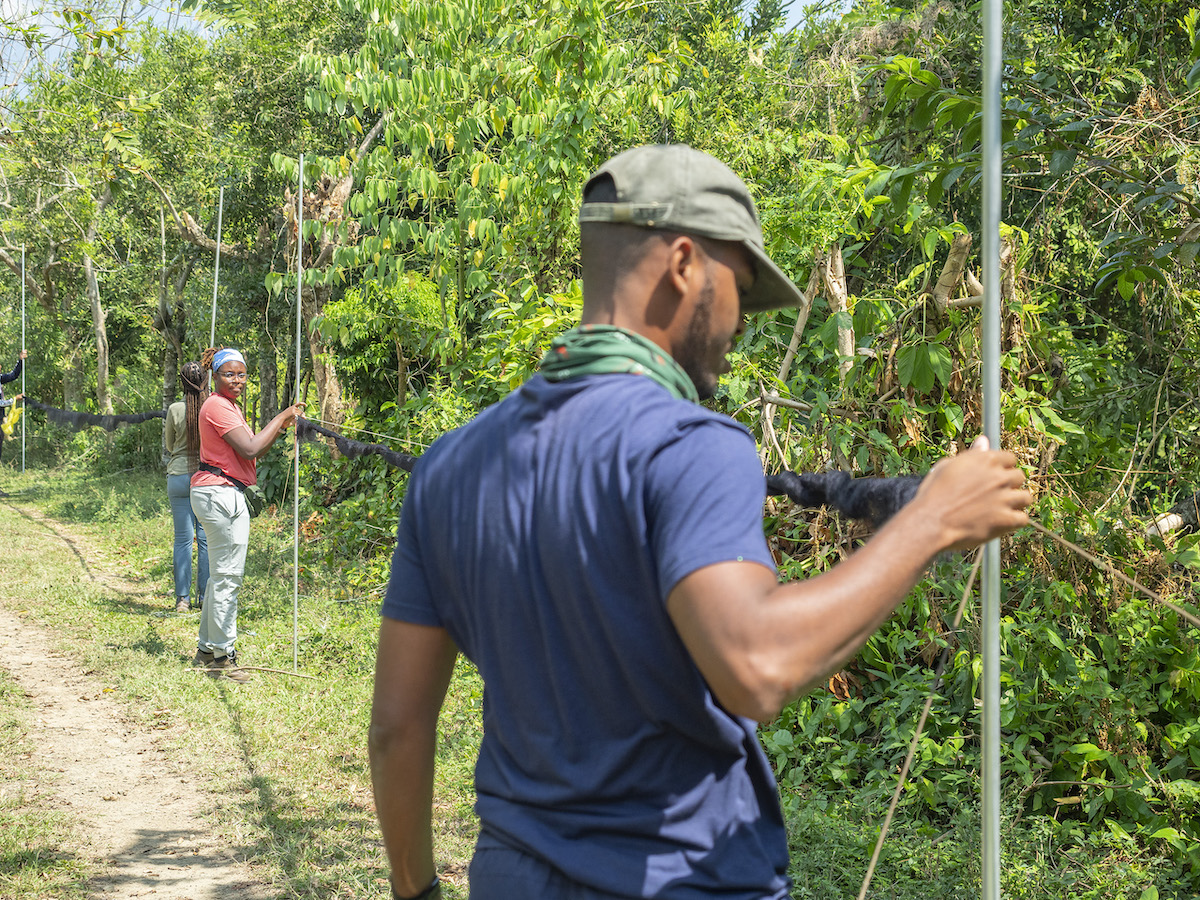
“Don’t be afraid, you are in control, not the bird”
As a child, I used to watch many programs on channels like Animal Planet and Discovery Channel with deep curiosity, as I have always found wildlife fascinating. However, animals did not captivate me solely for their majesty, such as lions and other big cats, or for their incredible sizes, like hippos and rhinos. For me, the greatest treasure in observing an animal is being able to understand its unique behavior and social interactions, at both inter- and intraspecific levels. That’s why I was so amazed when I started focusing more on birds as my birdwatching hobby developed. As fellow ornithologists and birders know, there is nothing more unique than a bird’s behavior.
The first time I held a bird in the context of bird banding was at the Santiago Botanical Garden. I was given the opportunity to release a freshly banded bird and it was a beautiful experience. However, it pales in comparison to the moment when I released a bird from its bag, held it properly, and took the necessary measurements before banding it and then releasing it. This whole process was so exciting for me that it came with a mix of nervousness.
When I was about to process my first bird, Juan Carlos (JC) Hernández Ordoñez was the one supervising my work. I am infinitely grateful to JC as he helped me learn the proper technique and gain confidence to safely handle a bird. I remember very clearly how at the beginning my nervousness caused my hands to shake a little when taking measurements and analyzing the bird. It was then that I heard JC say, “Don’t be afraid, you are in control, not the bird.”
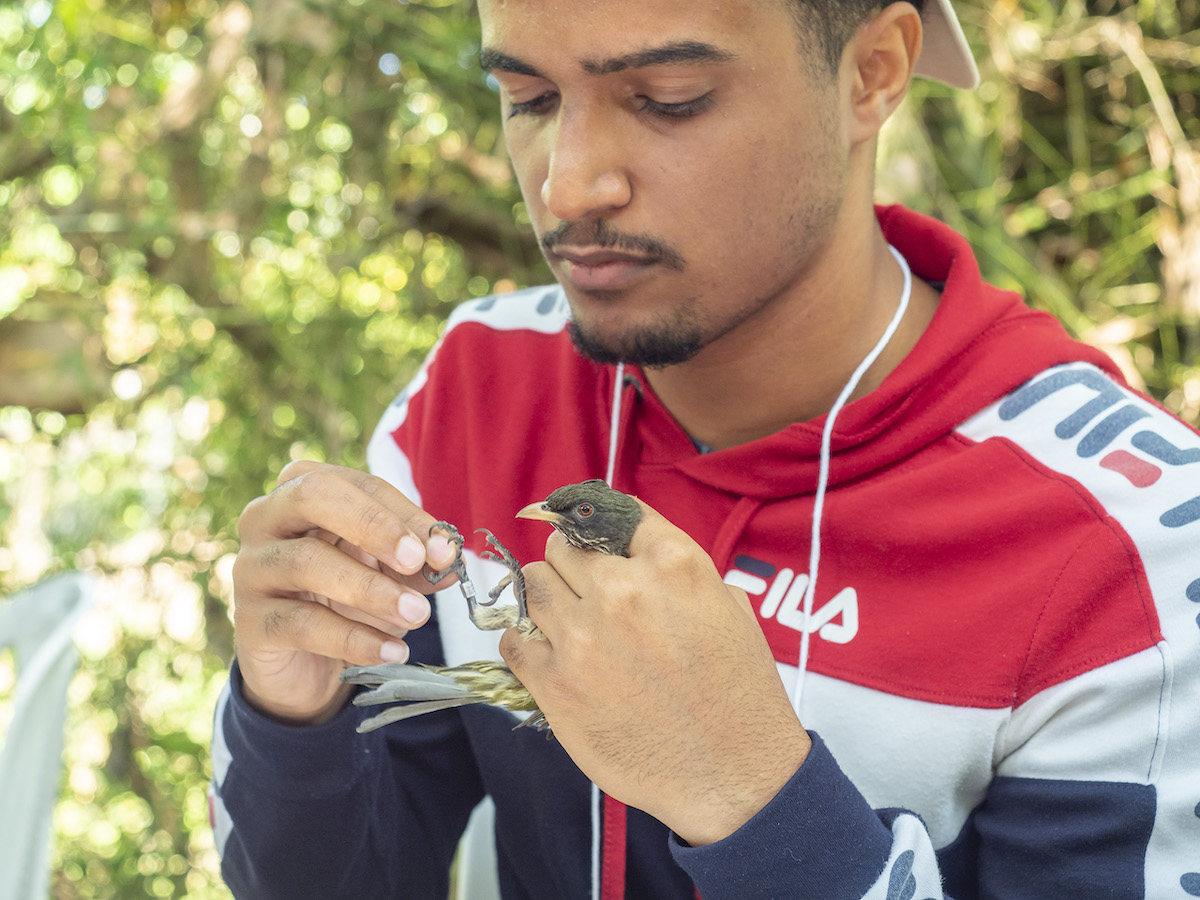
That is when I realized that my nervousness, perhaps driven by the fear of hurting the bird, was only adding stress that was being transmitted to the animal. If you are nervous and stressed, the bird you are holding will be too. But if you control the situation and remain calm, the bird you are processing will eventually calm down as well.
By the end of the course, about five birds had passed through my hands, and all but one showed no signs of stress that would warrant a premature release. It is amazing to have an animal in your hands for the right purpose, and then release it knowing that someone, another bird bander or even a birdwatcher, may encounter it some day in the future. The banded bird connects us to a shared conservation goal and binds us to it in an intimate way.
Molt, molt, molt!
Wait, who said that it was only about knowing how to handle a bird, taking it out of the net, and banding it for release? That’s excellent, but I’m sure you’ll be interested in knowing the age of the individual you’re holding, or at least an approximation. Why is it useful for us to know the age of the bird we’re banding? Well, among many things, it allows us to understand the ecological role that the individual is playing, or will play in the near future. If it has already gone through a reproductive stage, if it will seek to reproduce soon, if it has recently left the nest. Or if it is simply a fully mature individual that has been interacting with the surrounding ecosystem for more than two years. Of course, in addition to age, there are other things we can learn with greater accuracy with a bird in the hand, such as its sex or health status, which, of course, will help us quantify and infer more aspects of the bird’s life cycle.
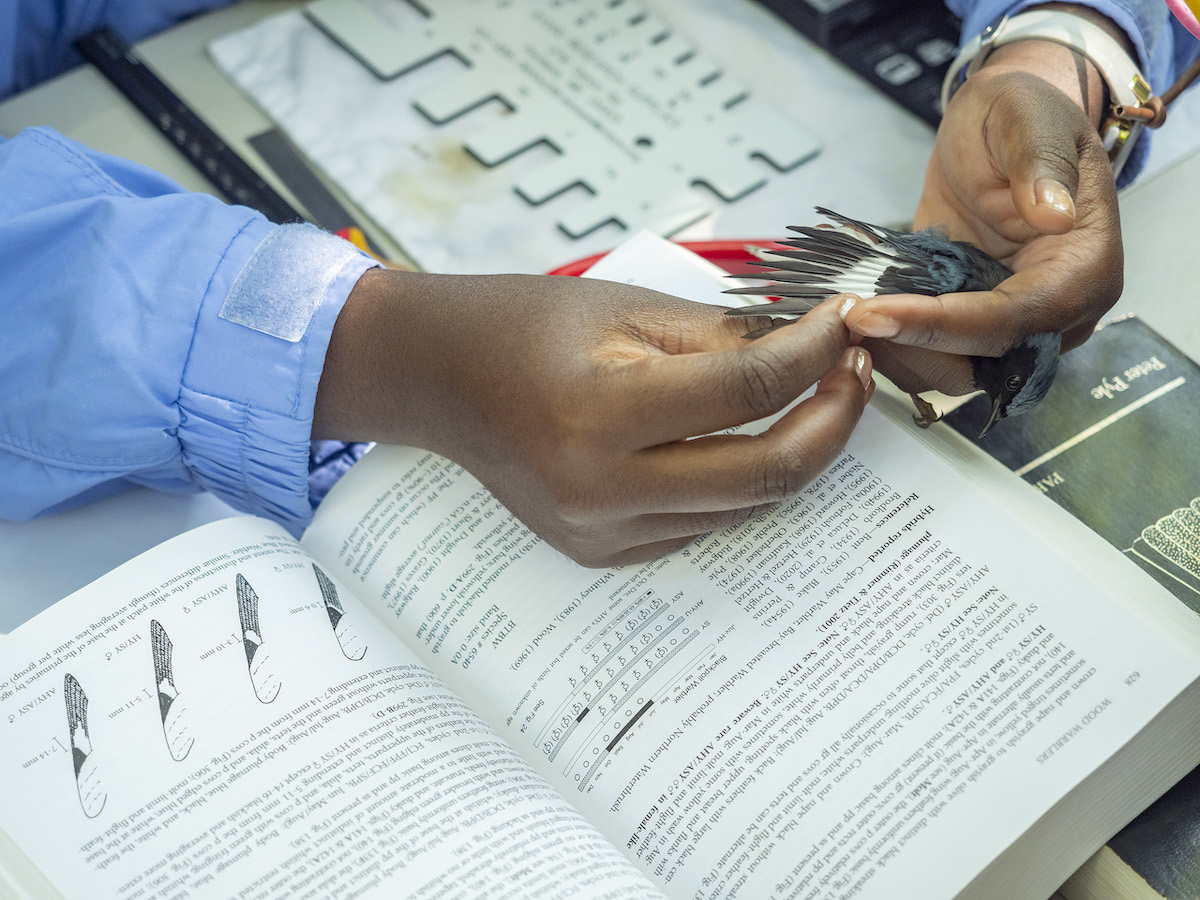
Molt, also known in birds as the replacement of feathers, is key to bird banders. These patterns of feather replacement, or molt patterns, can help us determine the age of a bird. When I first learned about molt, I was amazed by the beauty of this natural process in all birds. I admit that at first my “operating system” almost failed due to so much information to process. At that moment, I realized how we were all connected by another common interest throughout the workshop: molt! It was incredible. If we were at the banding table, we talked about molt. During and after lunch: more conversation about molt. Before sleeping: a study session on molt. We were obsessed with learning more and more about molt, practicing the Wolfe-Ryder-Pyle (WRP) method (a system for aging birds based on their different plumages) countless times, and even immersing ourselves in Peter Pyle’s book “The Identification Guide to North American Birds” as if it were our “bible.” How much I enjoyed all of that! As my friend Daniela Ventura said, we were becoming “molt nerds” and we were enjoying it.
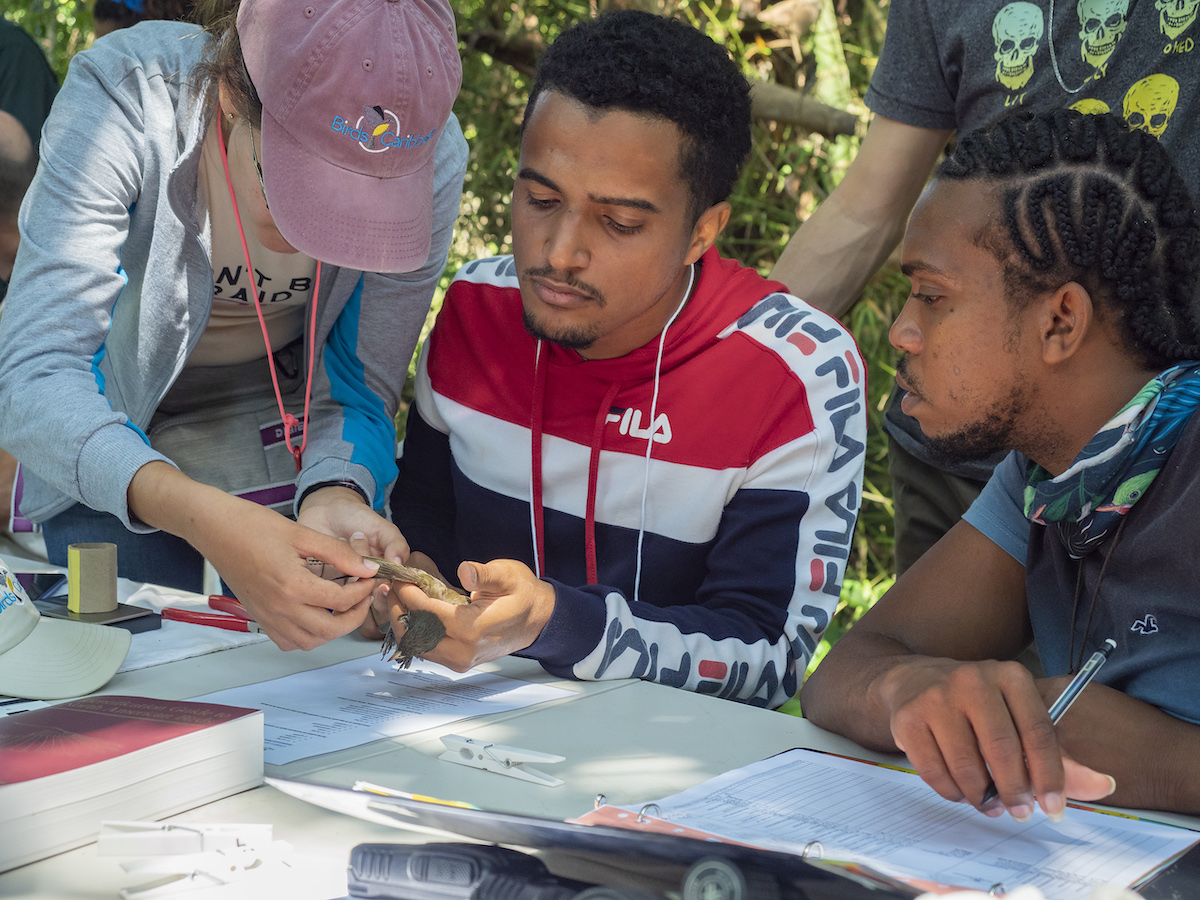
The best part is realizing that we never really stop learning, because Pyle’s book does not have all data about all birds. In fact there are birds for which we have little or no data. Those occasions when we encountered individuals with unique molting strategies, challenging molt limits, and deceptive alternate (breeding) plumages were the perfect setting for creating a session where trainers discussed what the correct code would be to describe the age of the bird, and the rest of us watched attentively as these interesting analyses unfolded. The fact that you can always come across these unique and challenging situations is, for me, part of the magic that birds hold in their molt strategies.
Birds Connecting the Americas
Undoubtedly, one of the most beautiful things about the workshop is the opportunity to meet people with similar interests and visions. Since we arrived at Rancho Baiguate in Jarabacoa on the afternoon of March 7th (a day before the official start of the workshop), we realized this benefit. After dropping off our luggage in the assigned room, we immediately went to dinner and sat at a table with Holly, Maya, Steve, and Zoya. From that moment on, we got to know each other and had many conversations about various topics, and it was very enjoyable. But if there’s one thing that stands out above all else, it’s how birds were the center of many of those conversations. Yes, I understand it may seem obvious, but even though we knew we would meet people who shared the same love for birds and conservation as we do, it’s always an indescribable pleasure to be able to talk and connect in person. Throughout the workshop, we met and interacted with incredible people, and we expressed our desire to work together on different approaches, always revolving around birds.
Finding common ground with people who share similar research and conservation interests is great because valuable knowledge is shared in those encounters. However, this would not amount to much if genuine connections are not formed—concrete connections that allow for efficient and organized collaboration. That’s why we were all very excited with the presentation of the BirdsCaribbean Caribbean Bird Banding (CBB) network and the Institute of Bird Population’s monitoring program for overwintering migratory birds, otherwise known as MoSI (monitoreo sobrevivencia invernal). It’s fascinating!
I want to express how thrilled and engaged we all were when the CBB network was introduced. The fact that we are being presented with a way to stay connected is more valuable than it may seem because it encourages more organized efforts: joint research proposals, shared databases, and fundraising for future projects. Similarly, I find the MoSI program incredible as it specifically focuses on connecting different bird banding stations where data on molt and plumage condition of banded species are provided. What does this do for us? It helps us primarily to understand how birds are changing their molt strategies, which, in addition to updating our records, helps us understand how species are being affected by various factors such as habitat loss and climate change.
My Plus/Delta
The Plus/Delta dynamic was key to the performance and experience we had in the workshop. Every afternoon, we took a moment to discuss the positives of the day (the “Plus”) and what we wanted to improve on in the next day’s work session (the “Delta”). It was very productive, as we listened to each other’s daily experiences, had the opportunity to share our achievements, and set goals for the next day. It is very gratifying to remember how, thanks to Plus/Delta, Gerónimo and I reflected on something that filled me with particular joy and satisfaction.
At the beginning of the article, I mentioned how after each morning’s banding session, we would casually talk about the things we were able to accomplish and say, “But tomorrow I want to be able to do this.” And that’s how, thanks to our trainers and fellow workshop participants, we were able to accomplish each and every one of those things we said we wanted to do.
My Plus, as some of us would say at the end, was the entire workshop. I am infinitely grateful for the opportunity to connect with so many incredible people through birds, and at the same time, learn so much alongside them. My experience was invaluable, and I am satisfied with everything I was able to achieve in those five days. The fact that I was able to band birds for the first time and know that I had the opportunity to contribute useful knowledge through it is amazing. The mini-courses on molt were amazing, our shared obsession made us connect so much that there was not a moment during the workshop when we were not making references to WRP codes or molt limits. Even during the farewell dinner, while we talked about everything, references to aspects of molt in birds would occasionally arise, and it was fascinating.
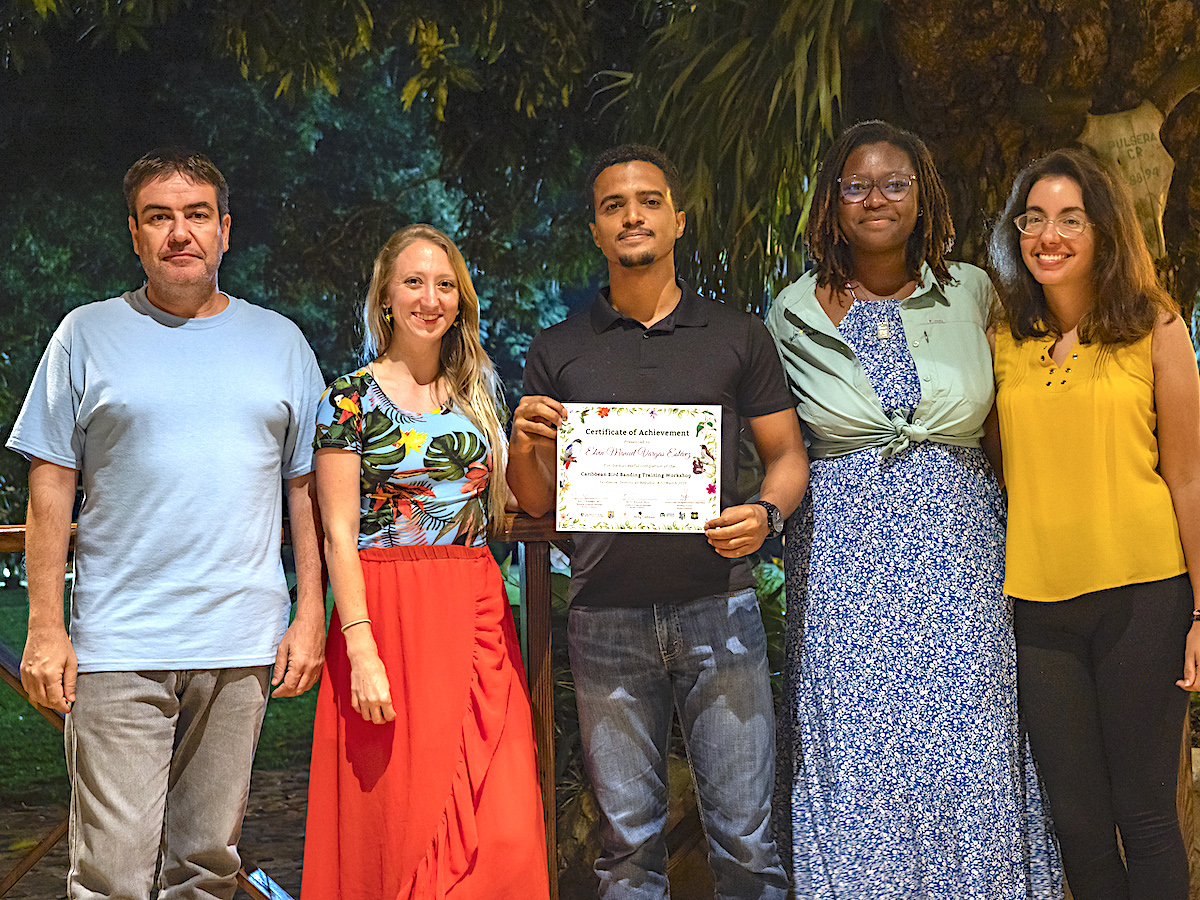
And what about my Delta? My Delta is a collection of things. It is clear that I want to continue to educate myself to grow this newly created wonderful network of bird banders in the Caribbean. In addition to that, I want to fight to make my country, the Dominican Republic, a place where ornithology, conservation, and science in general receive their deserved recognition and support from society and authorities. The love or curiosity for nature is in some way part of all human beings, but it is clear that not everyone can be expected to understand the complex ecological processes behind the beauty of the natural world.
Beyond that, I understand that in every nation, there must be a solid system where anyone willing to serve through scientific knowledge can find support and guidance. For this reason, one of my long-term goals (a goal that is shared by many of us attending the workshop) is to advocate for the reinforcement of the importance of avian conservation and government support for research related to it, both in the Dominican Republic and throughout the entire Caribbean.
About Elvin: Elvin Manuel Vargas Estévez, is biologist interested in bird behavior and avian conservation, from the Dominican Republic. He is a high-school science teacher at O&M Hostos School in Santiago and also volunteers with the Santiago Botanical Garden to survey and monitor the bird population in the Garden. Elvin is incredibly passionate about inspiring and educating the next generation of nature enthusiasts. He hopes to continue learning about birds and acquiring new skills that will help him make a positive impact in bird and wildlife conservation.
Acknowledgements: BirdsCaribbean thanks the US Fish and Wildlife Service, US Forest Service International Programs, and all of our members and donors whose support helped make this workshop and our Caribbean Bird Banding Network possible.
To learn more about our Banding Workshops and Caribbean Bird Banding Network, check out the links below:






One comment
Comments are closed.